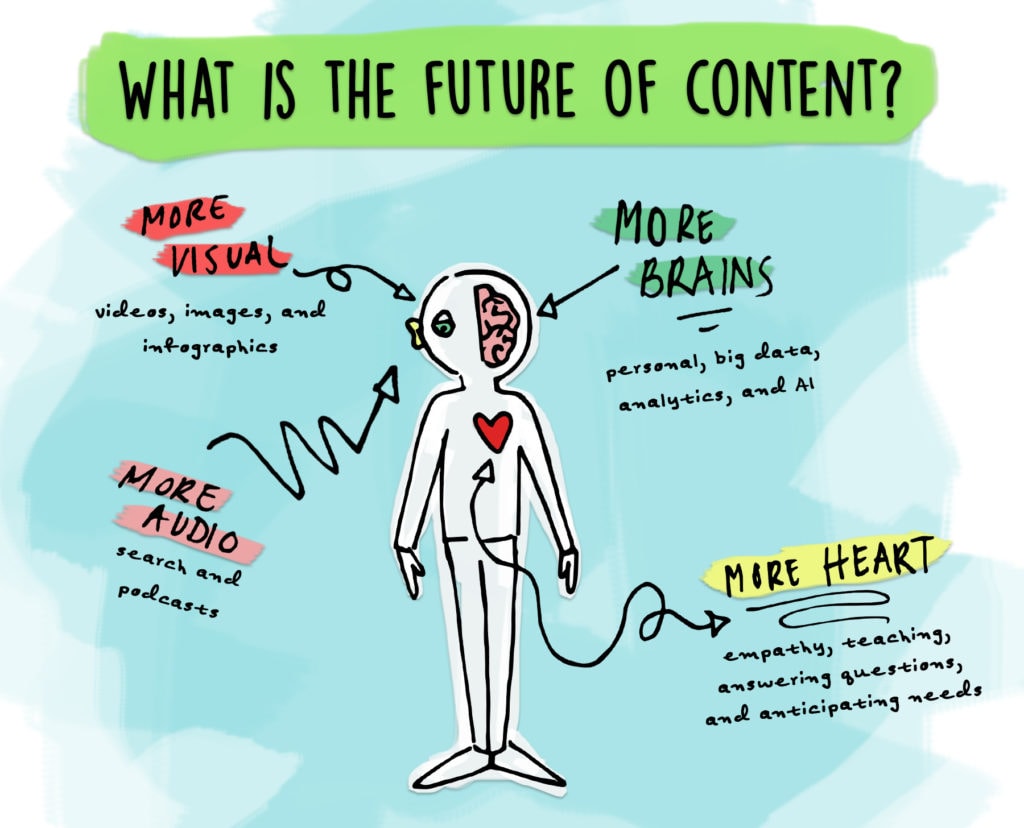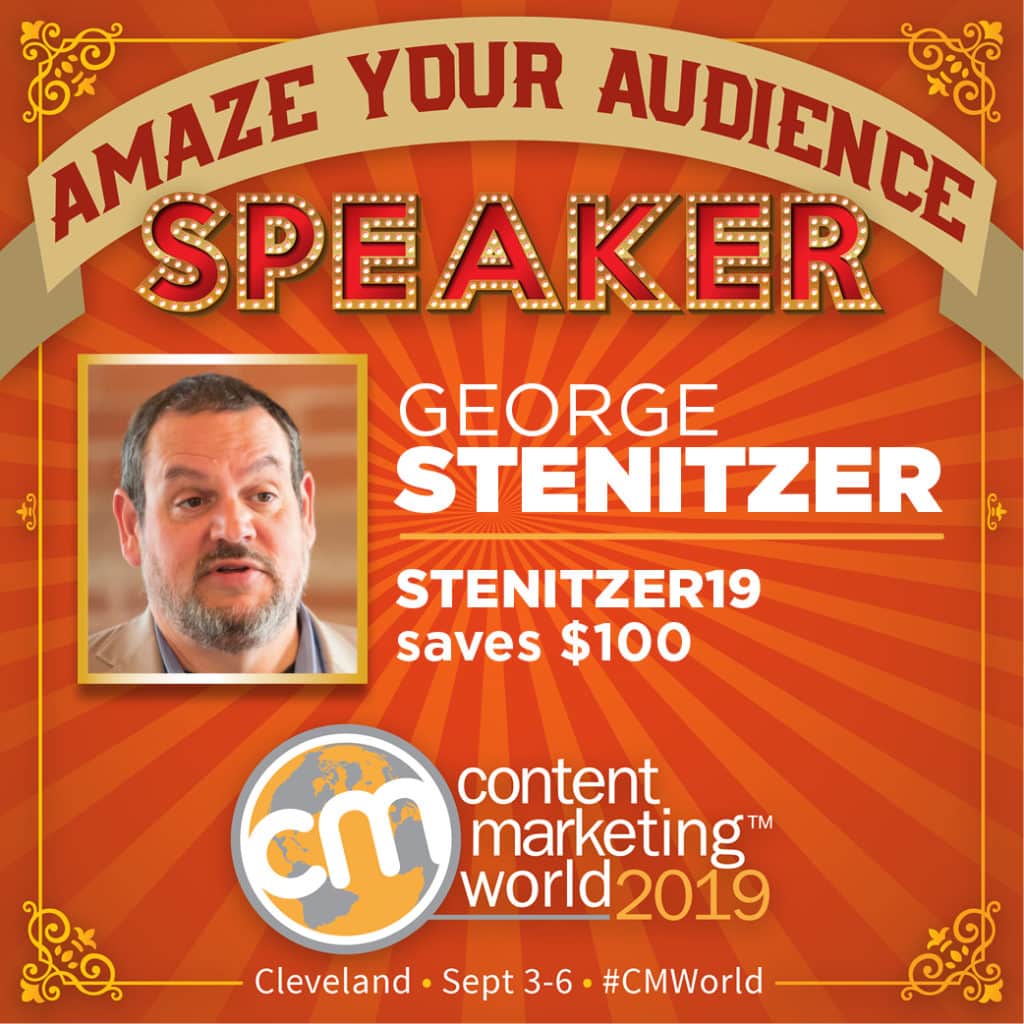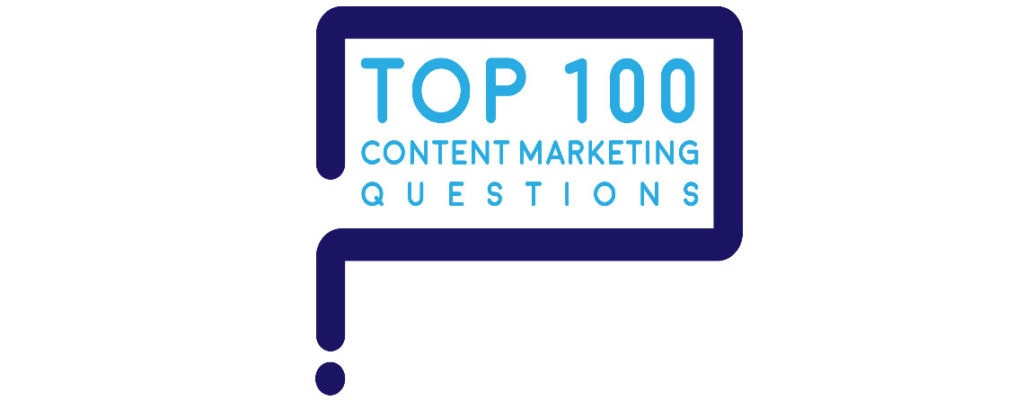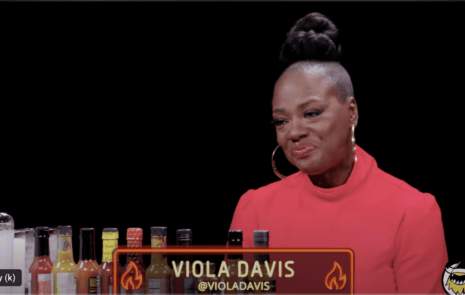
Top 100 Content Marketing Question: ‘How can I help with content marketing?’
I love this question: “How can I help?”
Whenever I hear a question like this, I pay lots of attention to who’s asking. Because it reveals your willingness to tackle new challenges, openness to the future and potential to move up in an organization.
By asking this question, you become one of a handful of people your leaders will turn to. Keep asking!
Here’s my advice for high-potential people like you who are working in and around content marketing: help your company and help yourself at the same time.
Plan your career path
First, plan your career path carefully. Don’t just let jobs happen to you.
In my 20s, I worked for vice presidents who had deep experience in one functional silo such as advertising, PR, or events – but they didn’t understand any of the adjacent functions.
It frustrated the heck out of me that my boss didn’t understand my job!
Working for someone who doesn’t understand your work is painful. Here’s advice on how to cope.
How can your boss lead you, direct you or teach you if they don’t understand what you do?
The answer is, they can’t. You’ll have to lead and teach yourself.
Work across functions
That’s why I sought employers that would permit me to “tour” the marketing and communications departments. Instead of becoming 1-dimensional, make your skill set 3-dimensional (3-D) by working in the 3 content marketing areas mapped out above.
Working in Fortune 500 companies, I took lateral moves whenever I could. That’s how I worked as a manager and director on advertising, marketing, media relations, events, employee communications, financial communications, speechwriting, brand, reputation, community relations, crisis communications and more.
This is a different path than most professionals take, but it’s worthwhile because it will serve your future best:
- Invest in your self-education. Follow thought leaders’ blogs and videos. Attend conferences to learn. Read books inside and outside your field.
- Get active in professional associations that can help you learn. Network with people in your field. Volunteer. Assume leadership roles.
- Accept lateral career moves that enable you to gain experience working in each function. (Not every move needs to be a promotion.)
- If you get stuck and can’t do the work you’re ready to do next, change jobs. I had to change companies to gain my first experience in advertising and to run a small marketing department for the first time.
- Build your personal brand. Post on social media, give talks, write guest blogs, answer questions, and share what you know.
Following this career path prepared me to become a director in a Fortune 500 company. By the time I became a VP, I’d had direct hands-on experience doing most of the jobs my team did.
That’s the kind of VP I wanted to be: one who could give my team the guidance, answers and cover they needed to do their jobs well and create their own career success. I’m proud that many people from my team have moved up over the years to become directors and vice presidents in marketing and communications.
Learn all the functions
If you’re early in your career, focus on gaining 3 skill sets that enable content marketing.
Don’t allow yourself to get stuck in one of these siloes. Instead, take tours across all 3 functions as you move up:
- Public relations or communications. In PR you learn a set of journalism skills that’s essential for earned and owned media. You interview people, work with executives, write fast, frame messages, tell stories and produce content.
You also learn how to work successfully with people who are not under your control – reporters, social media, analysts, gadflies, disgruntled shareholders, unions, communities and influencers. - Marketing. Marketing teaches you the company’s business, brand, products and distribution channels. You learn what customers need and want, and how to achieve revenue growth.
You work with creatives to build brands, create communications, work with sales, and do advertising, promotions and events. You focus on converting prospects into subscribers, subscribers into customers, customers into happy users and repeat buyers. - Conversion. Looking ahead, analytical skills move to the fore. In many companies, marketing is already spending more than IT on technology.
You learn to apply analytics to strengthen content execution, measure performance of different tactics, attribute success to the activities that drove it and recommend new paths forward. You will use big data, artificial intelligence (AI) and new technologies to gain insights from past performance, recommend present improvements, and apply predictive analytics.
Here’s the rub: to be successful in the coming decades, you’ll need to have all 3 skill sets. It serves you best to gain real-world experience in all 3 areas, as early as you can in your career.
You are the future of marketing
Prepare yourself well. Because the marketer of the future will need all these skills and more to succeed.
What’s the future of content marketing? It will be more audio and more visual. It will take more brains and more heart.

To maximize your success, balance the technology with humanity.
You know you can: you are the future.
“How can I help with content marketing?” is one of marketers’ Top 100 Questions about content marketing. Find the answers to the all of the Top 100 questions here.
I’ll speak about this project to collect the Top 100 Questions on content marketing at Content Marketing World 2019.

Have a question about content marketing? Please ask your question here.






